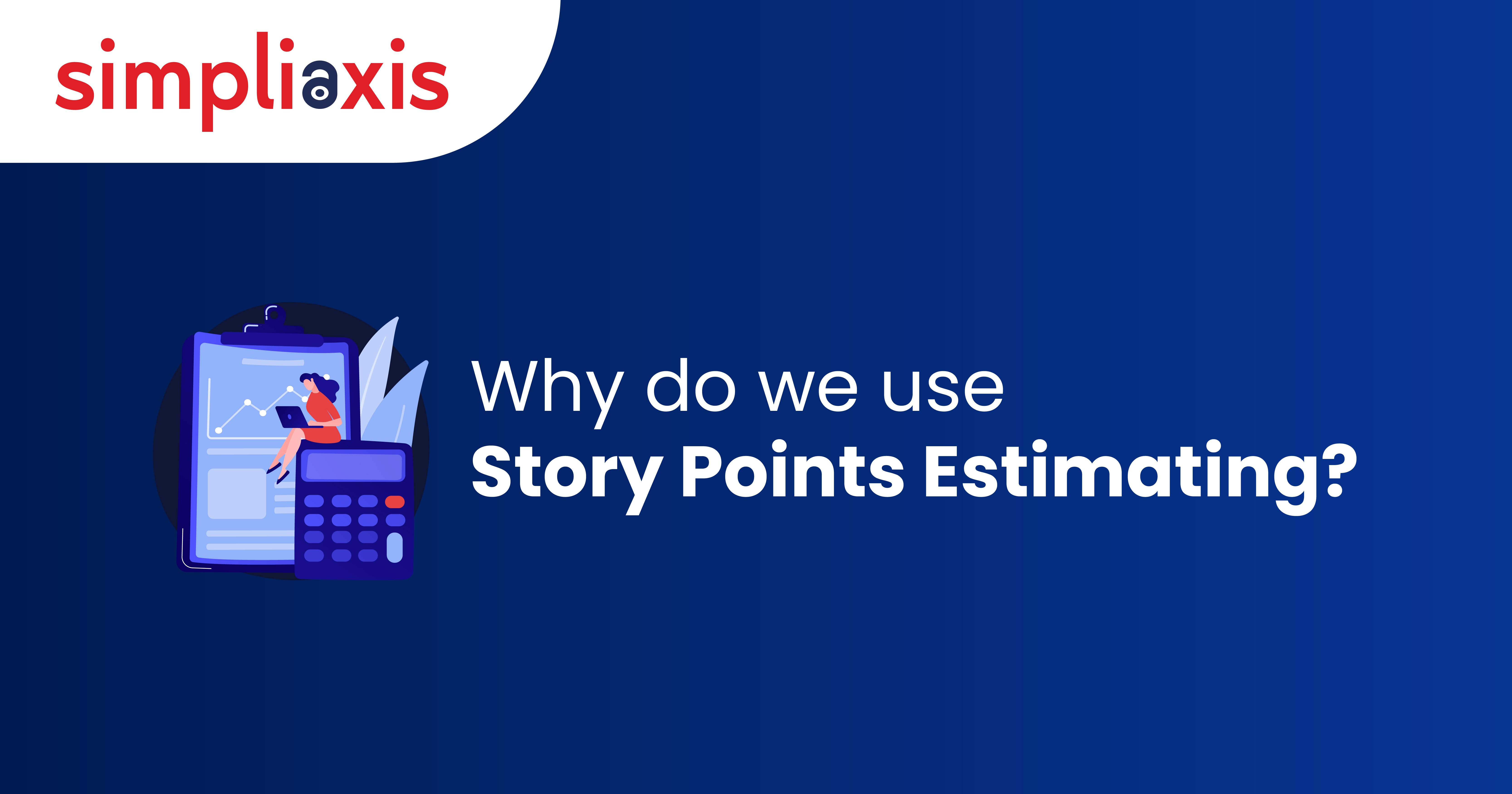Estimation is the most challenging part of any process. Think about your financial estimation in the last month. Was it within the budget you made, or did you face some unexpected expenses in the middle of the month? Thus, planning and estimating projects can feel the same. Sometimes, unforeseen obstacles and uncertainty delay the project timeline and deliverables. It makes you think about underperforming and over-budget. Here are the proper estimation techniques that help you in a crisis. In an agile framework, story point estimation can calculate the scope of a task and how much time and effort will be required to mitigate the issues that might come up with the task.
In this article, we will discuss story point estimation in detail. What they are, and six points to implement and estimate story points. At the end of the article we will explore the benefits of using story points in agile. Read the article to explore the estimation process in detail.
What are Story Points?
Story points in agile are used to evaluate the amount of effort required to complete a user story in the product backlog. The estimation should be done before a sprint planning meeting, where the team estimates how much work will be completed in the upcoming sprint. In addition, the estimation considers risk, work repetition, and task complexity that impact the task scope and efforts. In story point estimation, risk is the uncertainty associated with the task; repetition is the repetitive task performed by the team, and complexity is the level of task difficulty. However, story points are estimated relative values and ratios of the problems, not the actual values. Hence, the estimation is introduced in the PMP and CSM certification training. It offers the basic ideas you need to implement in your team for better results.
Story Points vs. Time-Based Estimation
Story point estimation users think that we should use time estimation for tasks. Time-based estimation is popular in agile to identify the scope of work. Still, it has some downsides, such as being incapable of determining the complexity and risk of the tasks. In addition, time-based estimation depends on personal estimation influenced by individuals' seniority and experience. Here, agile story points resolve issues, encourage collaboration, and account for risk and complexity. It uses a universal scoring system that helps the team stay aligned.
Further, each team estimates the task on a different scale, which causes the same task to have a different velocity. Once the whole team agrees on the relative effort of each story point value, you can assign points as per the discussion. In addition, team members get rewards for solving problems based on difficulty. It motivates the team members to focus on the values and utilize the time for quick resolution. However, it has some drawbacks, as it should not be used to judge people, resources, and productivity. Instead, story points in agile can be used to recognize the size of the work and prioritize the task.
Story Points and Planning Poker
In story point estimation, planning poker is used to evaluate the effort of the product backlog. Planning poker is an estimation process that involves all Scrum team members and encourages workplace democracy. It helps the members understand the prediction model, choose tasks from the task list, discuss the tasks, and hold up a card bearing a number representing the estimation of the task. The team members should discuss the topic and pull the card within two minutes. Thus, it is a consensus-based assessment approach that avoids the effect of other group members.
Read More: What is Planning Poker in Agile?
Six Steps for Implementing and Story Points Estimating
How do you implement it to scope user stories? Let’s dig into the details:
Step 1. Understand the Process
The agile team must have a strong understanding of agile story points. Initially, make sure your team understands the benefits of estimation. In addition, the team members should understand that the story point number needs to scale relatively. Suppose a task is assigned to a story point of two; it should take twice the effort, whereas the same task assigned to a story point of three should take one and a half times the amount of effort.
Step 2. Recognize the Scale
Understand the story point sequences, a scoring method that the team will use to assign story points in the estimation meeting. This method forces the team to focus on the relative size between the numbers, making the complex task more manageable. Agile Fibonacci story points are a series of numbers, each the sum of the two preceding numbers. But it can be complicated if numerical values overwhelm your team.
Step 3. Develop a Story Point Matrix
It is a fleshed-out version of the estimation sequences. Therefore, it serves as a baseline estimation meeting and gives the team a clear idea of how to score each task. The matrix will help run sprints and gain a better understanding of team tasks. Re-evaluate the matrix after every sprint to perfect the estimation.
Step 4. Conduct Planning Poker Meeting
It ensures the team stays on the same page in decision-making on how many tasks your team can complete in the next sprint. In addition, planning poker involves the whole team assigning story points based on diverse opinions that prevent unconscious biases.
Step 5. Plan and Execute Sprint
Uncertainty about how many story points you can complete per sprint is normal. It depends on the tasks' complexity and the story points' value. In such cases, your first sprint might include a high number of low-value or a low number of high-value story points. Over time, you will improve based on your team feedback.
Step 6. Improve the Estimations
Continuous improvement is the main theme of Agile. Therefore, take suggestions from your team and improve your planning. You can organize a separate meeting for the sprint retrospective. The team provides feedback on unexpected project bottlenecks or reasons behind the mismatched target to help you re-evaluate the story points sequence.
Read More: What is a User Story?
How to Perform the Story Point Estimation
It is essential to understand that the value of story points is relative. You can choose a scale of 1, 3, 5, or 300,400; the ratio is the primary concern. Therefore, relativity allows developers to compare one item to others. However, the Agile frameworks use multiple estimation techniques. Let's discuss a few of them to understand the process.
Numerical Points, T-Shirt Sizes, Animals, Planets:
Initially, you must recognize how to designate your relative estimation metric. It does not necessarily have to be a number. It may be like:
Numeric points like 1, 3, 5, 8, etc.
An animal series, such as a kitten, elephant, or hippo, is one of many examples.
T-shirt size series like XS, S, M, L, XL, etc.
Small to large planet series -Pluto, Mercury, Mars, Venus.
Whatever the name you choose, it must ensure that the difference between the two sizes is easily understandable. An elephant compared to a kitten may seem ridiculous, but the team will understand the relative difference between the two sizes as they use this sizing metric over time.
Fibonacci Sequence:
The Scrum team uses the Fibonacci sequence to estimate PBIs. It is like 0,1,1,2,3,5,8,13,21…. If you notice, you will recognize that the numbers are the sum of the two that come before each number. The prime advantage of using these numbers is clearly distinguishing between them.
Therefore, while using story points, developers could easily come up with different numbers for a specific PBI. In addition, the difference between the 2, 5, and 8 is more recognizable and easier to discuss the reason for the differences. If you use points like 3 and 4, the numbers are so close that they do not make any difference.
How to Use Story Points in Agile Projects
Planning is a crucial part of project management. Lack of proper planning and scope identification can lead to project delay, failure, and scope creep. However, story points for estimating a task can help you in this regard. Let’s take a look at how to use it in the agile framework:
At the initial stage, write a user story for each desired feature. The format will be as follows: As a user, I want to propose feedback and questions through the site to better understand product attributes.
Then, add your stories to your product backlog and assign story points to each user story to estimate the effort.
Thereafter, use story points to select user stories from your backlog and ensure that you are picking the right amount of work for each sprint. Then execute the sprint.
Benefits of Using Story Points for Estimating
It makes estimation effortless and simplifies the sprint planning. Apart from that, it has a few more benefits like:
Enhance Planning: It measures relative estimation, which means calculating the value of one story point by comparing it to similar ones. Therefore, using the relative scoring method leads to faster estimation and helps in teamwork.
Risk Accountability: Assesses the unknown risk of the tasks and helps in planning and identifying the scope of the effort.
Eliminate Skills Bias: This will eliminate the skill bias in your planning and bring your team on the same page. It allows a planning poker meeting to estimate the effort after considering the senior and junior members' responses to the same task.
Develop a Meaningful Deadline: Agile estimation allows for the development of achievable, meaningful, minute deadlines. It reduces burnout and work overstretching.
Create Better Estimation: The main perks of this estimation process are that it is adaptable and reusable. Means, once you create a story points matrix and use it for the first sprint. After that, re-estimate the efforts and make them more accurate for the next sprint.
Read More : Agile Manifesto Principles Values
Is Story Points Estimation Related to Effort or Hours?
The team talks about the work instead of guessing how long it will take to finish a product backlog item. Using the techniques helps everyone on the team understand and agree on how hard the work is, no matter who is doing it. It is assumed that everyone on the team will do the same work in the same amount of time when they say something like one hour equals three story points. A senior team member might work on a task for an hour, but a junior team member might work on it for three hours. Both will be doing the same amount of work. Talking about effort instead of hours helps everyone understand how much work needs to be done.
Final Thoughts
Discussion is essential in the agile framework. Story points for estimating a product backlog item or a user story to understand the scope of the work plan in a sprint. It offers internal team metrics, velocity, and the number of points implemented per sprint. Discussing the project plan can help the project manager identify the project gap. In addition, using planning poker helps in estimation and reduces statistical bias. Once everyone on the team has decided, the story points for the list item are given out. The expected number of points is then used to determine a team's overall sprint rate, potential, and other aspects. Furthermore, understanding story points in agile can be challenging as they are influenced by work volume, complexity, and risk.
















